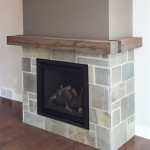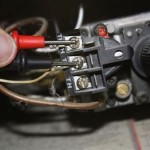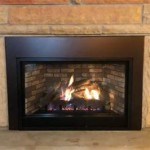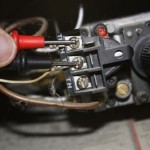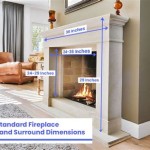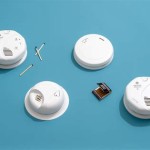How to Install a Wood Stove Into an Existing Fireplace
Installing a wood stove into an existing fireplace is a viable option for homeowners seeking to improve heating efficiency and reduce reliance on traditional central heating systems. This process involves careful planning, adherence to safety codes, and a thorough understanding of the existing fireplace structure. Before commencing any installation, it is crucial to consult with local building codes and obtain necessary permits. Failure to comply with regulations can result in fines and mandatory removal of the wood stove.
The primary benefit of this type of installation is the utilization of the existing chimney, reducing the cost and complexity associated with constructing a new chimney system. However, the existing chimney must be in good working order and properly sized for the wood stove. A poorly matched chimney can lead to dangerous backdrafts and inefficient combustion. Selecting the right wood stove is also critical, considering factors such as the size of the area to be heated, the desired heat output, and the overall aesthetic of the room.
Assessing the Existing Fireplace and Chimney
The initial step in installing a wood stove into an existing fireplace involves a comprehensive assessment of the fireplace and chimney. This includes a visual inspection to identify any structural damage, such as cracks in the firebox, crumbling mortar, or signs of water damage. A professional chimney sweep should be employed to clean and inspect the chimney flue. The sweep can identify any obstructions, creosote buildup, or other issues that may impede proper ventilation. A chimney camera inspection provides a detailed view of the flue's interior, allowing for the identification of hidden problems.
The dimensions of the firebox must be measured to ensure that the selected wood stove will fit comfortably within the existing space. Adequate clearance around the stove is essential for safety and proper airflow. Local building codes typically specify minimum clearance requirements for combustible materials, such as walls and flooring. These clearance requirements must be strictly adhered to. The hearth, the non-combustible area in front of the fireplace, must also be of sufficient size to protect the flooring from embers and sparks. If the existing hearth is inadequate, it may need to be extended or replaced.
The chimney flue must be properly sized to match the outlet of the wood stove. An undersized flue can restrict airflow, leading to incomplete combustion and the buildup of dangerous carbon monoxide. An oversized flue, conversely, can result in rapid heat loss and increased creosote formation. A professional chimney sweep or installer can perform a flue sizing calculation to determine the appropriate flue diameter. If the existing flue is not properly sized, a stainless steel liner can be installed to provide a correctly sized and airtight flue. Installing a liner is often recommended, even if the existing flue appears to be adequately sized, as it provides an added layer of safety and improves the overall performance of the wood stove.
Furthermore, verifying the structural integrity of the chimney itself is paramount. Older chimneys may have deteriorated brickwork or mortar joints. In areas prone to seismic activity, ensuring the chimney is adequately reinforced is essential. Any necessary repairs to the chimney structure should be completed before installing the wood stove. Neglecting structural issues can compromise the stability of the chimney and pose a serious safety hazard.
Selecting the Right Wood Stove and Components
Choosing the appropriate wood stove is crucial for achieving efficient heating and ensuring safe operation. Factors to consider include the size of the area to be heated, the desired heat output (measured in BTUs), the stove's efficiency rating, and the available space within the firebox. Wood stoves are available in various sizes and styles, ranging from small, compact models suitable for smaller rooms to larger, high-output models designed for heating entire homes.
The stove's efficiency rating indicates how effectively it converts wood into heat. Higher efficiency ratings translate to less wood consumption and reduced emissions. EPA-certified wood stoves are designed to meet strict emissions standards, making them a more environmentally friendly option. When selecting a wood stove, it is important to consider the type of wood that will be burned. Some stoves are designed to burn softwood, while others are better suited for hardwood. Using the wrong type of wood can reduce efficiency and increase creosote buildup.
In addition to the wood stove itself, several other components are necessary for a proper installation. A stove pipe, typically made of black stove pipe, connects the stove to the chimney flue. The stove pipe must be of the correct diameter and length to ensure proper draft. It should be installed with a slight upward slope to facilitate the flow of smoke and combustion gases. A damper is often included in the stove pipe to regulate airflow and control the burn rate. The damper should be easily accessible and adjustable.
A block-off plate is typically installed at the base of the chimney flue to seal off the fireplace opening and prevent heat from escaping up the chimney. The block-off plate should be made of a non-combustible material, such as sheet metal or concrete board. Insulation can be added to the block-off plate to further reduce heat loss. A thimble, a metal or ceramic fitting, is used to connect the stove pipe to the chimney flue. The thimble should be properly sealed to prevent leaks of smoke or combustion gases. All connections between the stove, stove pipe, thimble, and chimney flue must be airtight to ensure efficient and safe operation.
Installing the Wood Stove and Ensuring Safety
The installation process begins with preparing the fireplace opening and ensuring that the hearth meets the required size specifications. The wood stove is then carefully positioned within the firebox, ensuring adequate clearance from combustible materials. The stove pipe is connected to the stove collar and the thimble in the chimney flue. All connections are secured with stove pipe screws and sealed with high-temperature sealant to prevent leaks. The block-off plate is installed at the base of the chimney flue, sealing off the fireplace opening.
If a stainless steel liner is being installed, it is lowered down the chimney flue and connected to the stove pipe. The liner is then insulated to improve its performance and prevent condensation. The insulation also helps to maintain a stable flue temperature, which reduces creosote formation. Proper insulation of the liner is crucial for ensuring efficient and safe operation of the wood stove.
Once the wood stove is installed, it is important to conduct a test burn to ensure that it is operating properly. During the test burn, the draft should be checked to ensure that smoke is flowing up the chimney and not leaking into the room. The temperature of the stove pipe and chimney should be monitored to ensure that they are not overheating. A carbon monoxide detector should be installed in the room to provide an early warning of any potential leaks. The area around the stove should be carefully observed for any signs of smoke or heat leakage. Any issues identified during the test burn should be addressed immediately.
Homeowners should familiarize themselves with the proper operation of the wood stove, including how to load wood, adjust the air controls, and clean the stove and chimney. Regular cleaning of the stove pipe and chimney is essential for preventing creosote buildup, which is a major fire hazard. A professional chimney sweep should be hired to inspect and clean the chimney at least once a year, or more frequently if necessary. Proper operation and maintenance will ensure that the wood stove provides years of safe and efficient heating.
Finally, adhere to all local building codes and regulations throughout the entire installation process. This includes obtaining the necessary permits, following clearance requirements, and ensuring that all components are installed according to the manufacturer's instructions. Consulting with a qualified professional is recommended to ensure that the installation is done safely and correctly.

Converting A Fireplace To Wood Burning Stove Chesneys

Converting A Fireplace To Wood Burning Stove Chesneys

Can You Install A Wood Stove In Fireplace Direct Stoves

Victorian Fireplace Hobbit Installation Small Stoves

Woodburner Installations In Victorian Fireplaces Cosy Stoves

Chimney Installations

How To Install A Wood Burning Stove Into An Existing Chimney Www Pomoly Com

How To Install A Wood Burning Stove Into An Existing Fireplace

Can You Install A Wood Stove In Fireplace Direct Stoves

How To Install A Wood Burning Fireplace Insert Fireplaces Direct Learning Center
Related Posts

